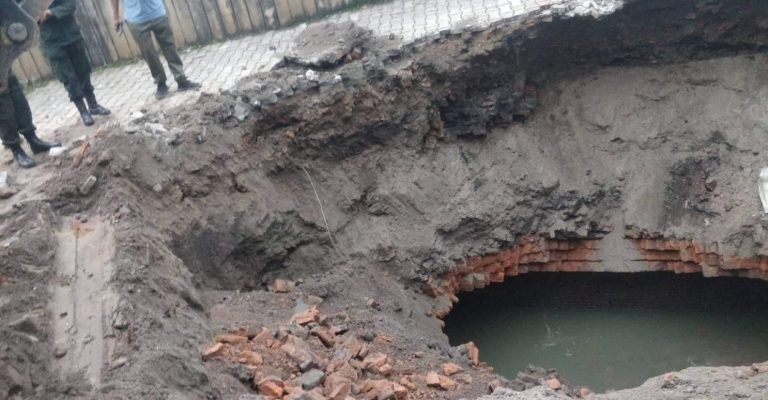
The Kathmandu Metropolitan City (KMC) will not be allowed to demolish the structure (tunnel) made above Tukucha river in Hattisar.
As per the report of the Department of Archaeology (DoA), the underground tunnel of Tukucha has been declared an archaeological heritage and historical artifact – meaning it will have to be protected and cannot be demolished.
The committee, led by archaeologist Bhaskar Gyawali, prepared the report after conducting the study which suggested ‘the structure was built during the Rana period’ and has to be preserved.
The archeology department started the study after the KMC used a dozer to demolish the area to dig up the Tukucha River which was underground.
The study committee concluded that the underground tunnel that has covered Tukucha river from the Narayanhiti to Kathmandu Plaza, was built more than 100 years ago.
It has been found that the tunnel was constructed using limestones and bricks in the shape of a dome. The construction style was ‘Neoclassic’ which reflects influence of British technology.
During demolition process, metropolis had also found ‘Shree-3 Bir’ written on some of the bricks suggesting bricks were from Rana period.
Spokesperson of DoA, Ram Bahadur Kunwar, said that discussions will be help with Kathmandu metropolis.
“We will take necessary steps based on discussion. The department has recognized Tukucha tunnel as an archaeological heritage so now the metropolis cannot destroy it,” he said.
According to the Ancient Monuments Preversation Act, 2013 (1956), it is not allowed to demolish, remove, alter or deface any archaeological object without the approval of the government.
If an archaeological object is destroyed, destroyed, mutilated, stolen or removed or altered in an unauthorized manner shall be punished with a fine of twenty-five thousand rupees to one hundred thousand rupees or with an imprisonment of five years to fifteen years or both.






